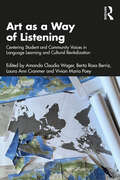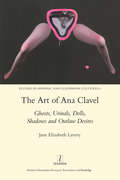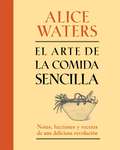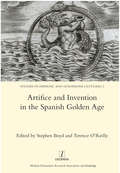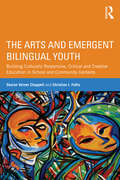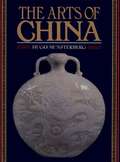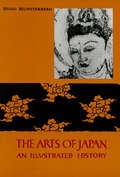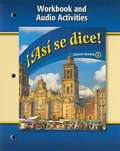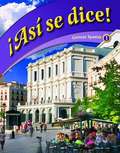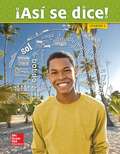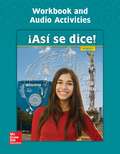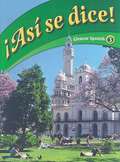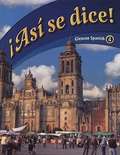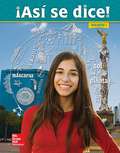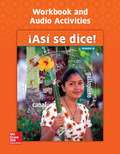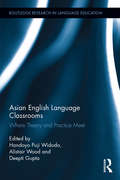- Table View
- List View
Arma, tiro, bammm!
by Joan Mari Irigoien Aranberri?Hamzak, beraz, leherketa hura zuen jada buruan: izango ez zuen, bada, puntuari begira zegoela musika hura etorri bazitzaion, bamm bamm-bamm? musika hura, bai, gorputzean ere sentitzen zuena, bere gorputza zuhaitz bat balitz bezala, zainak adartzat zituena eta bere bihotz hura fruitutzat; bihotz hura, soka bakarreko lautak bezala, bamm-bamm-bamm egiten zuena, sistoleak eta diastoleak bat eginik; musika hura, segundo gutiren buruan erabateko bakera eraman zuena: BAMMM!? Hari bi nobela bakar berean: batetik, Bereibarko familia bat (Gipuzkoa eta Bizkaia arteko alegiazko herria) bizibidez eskopeta-lantegi bat daukana; bestetik, Balad al Xams-eko (Ekialde Hurbileko balizko herrialdea) beste familia bat, gerra ahaztu baten ondorioak nozitu beharko dituena; modu paraleloan kontatzen zaizkigu batzuen nahiz besteen pozak eta nekeak, eguneroko kontu xeheak eta Historia markatzen duten gertakari handiak, XX. mendeko bigarren erdian hasi eta gaur arte. Hari biek, halabeharrez, bat egiten duten arte. Ez da ohikoa arma trafikoa gaitzat hartzea eleberri batean; irakurlearen gogo-bihotzak inarrosteko asmo osoz egin du Joan Mari Irigoienek, eta helburu horri begira erabili bere artearen tresna guztiak. Hiru ezaugarriok nabarmendu daitezke egilearen lanean: hizkuntzaren erabilera zaindu eta ederra, hainbat istorio sortu eta kateatzeko fabulazio-ahalmen itzela, eta gure gizarteko gai minberak ukitzeko kontzientzia etikoa.
Art as a Way of Listening: Centering Student and Community Voices in Language Learning and Cultural Revitalization
by Amanda Claudia Wager Berta Rosa Berriz Laura Ann Cranmer Vivian Maria PoeyOffering a wealth of art-based practices, this volume invites readers to reimagine the joyful possibility and power of language and culture in language and literacy learning. Understanding art as a tool that can be used for decolonizing minds, the contributors explore new methods and strategies for supporting the language and literacy learning skills of multilingual students. Contributors are artists, educators, and researchers who bring together cutting-edge theory and practice to present a broad range of traditional and innovative art forms and media that spotlight the roles of artful resistance and multilingual activism. Featuring questions for reflection and curricular applications, chapters address theoretical issues and pedagogical strategies related to arts and language learning, including narrative inquiry, journaling, social media, oral storytelling, and advocacy projects. The innovative methods and strategies in this book demonstrate how arts-based, decolonizing practices are essential in fostering inclusive educational environments and supporting multilingual students’ cultural and linguistic repertoires. Transformative and engaging, this text is a key resource for educators, scholars, and researchers in literacy and language education.
Art as a Way of Talking for Emergent Bilingual Youth: A Foundation for Literacy in PreK-12 Schools
by Berta Rosa Berriz Amanda Claudia Wager Vivian Maria PoeyThis book features effective artistic practices to improve literacy and language skills for emergent bilinguals in PreK-12 schools. Including insights from key voices from the field, this book highlights how artistic practices can increase proficiency in emergent language learners and students with limited access to academic English. Challenging current prescriptions for teaching English to language learners, the arts-integrated framework in this book is grounded in a sense of student and teacher agency and offers key pedagogical tools to build upon students’ sociocultural knowledge and improve language competence and confidence. Offering rich and diverse examples of using the arts as a way of talking, this volume invites teacher educators, teachers, artists, and researchers to reconsider how to fully engage students in their own learning and best use the resources within their own multilingual educational settings and communities.
The Art of Ana Clavel: Ghosts, Urinals, Dolls, Shadows and Outlaw Desires
by JaneElizabeth LaveryAna Clavel is a remarkable contemporary Mexican writer whose literary and multimedia oeuvre is marked by its queerness. The queer is evinced in the manner in which she disturbs conceptions of the normal not only by representing outlaw sexualities and dark desires but also by incorporating into her fictive and multimedia worlds that which is at odds with normalcy as evinced in the presence of the fantastical, the shadow, ghosts, cyborgs, golems and even urinals. Clavels literary trajectory follows a queer path in the sense that she has moved from singular modes of creative expression in the form of literary writing, a traditional print medium, towards other non-literary forms. Some of Clavels works have formed the basis of wider multimedia projects involving collaboration with various artists, photographers, performers and IT experts. Her works embrace an array of hybrid forms including the audiovisual, internet-enabled technology, art installation, (video) performance and photography. By foregrounding the queer heterogeneous narrative themes, techniques and multimedia dimension of Clavels oeuvre, the aim of this monograph is to attest to her particular contribution to Hispanic letters, which arguably is as significant as that of more established Spanish American boom femenino women writers.
The Art of Chicago Improv: Short Cuts to Long-Form Improvisation
by Rob KozlowskiIn this book the author traces the history and growth of acting in Chicago.
El arte de la cocina sencilla
by Alice WatersDurante más de cuatro décadas, Alice Waters ha sido la máxima defensora de los alimentos locales de temporada producidos de forma sostenible. Ha sido aclamada globalmente y ha mostrado al mundo que el verdadero secreto de la buena cocina es comenzar con los ingredientes de mejor sabor. En El arte de la comida sencilla, Alice Waters aplica esta filosofía a 19 lecciones de cocina y a más de 250 recetas cotidianas que ilustran lo fácil que es comer maravi-llosamente bien si se cocina, se come y se vive según estas leyes fundamentales: Comer alimentos locales y sostenibles Comer alimentos de temporada Comprar en los mercados agrícolas Sembrar un jardín Conservación, compostaje y reciclaje Cocinar con simpleza Cocinar juntos Comer juntos Recordar que la comida es preciosa (Spanish translation of "The Art of Simple Food")
El arte de la cocina sencilla: Notas, Lecciones Y Recetas De Una Deliciosa Revolucion
by Alice WatersDurante mas de cuatro decadas, Alice Waters ha sido la maxima defensora de los alimentos locales de temporada producidos de forma sostenible. Ha sido aclamada globalmente y ha mostrado al mundo que el verdadero secreto de la buena cocina es comenzar con los ingredientes de mejor sabor. En "El arte de la comida sencilla," Alice Waters aplica esta filosofia a 19 lecciones de cocina y a mas de 250 recetas cotidianas que ilustran lo facil que es comer maravi-llosamente bien si se cocina, se come y se vive segun estas leyes fundamentales: Comer alimentos locales y sostenibles, Comer alimentos de temporada, Comprar en los mercados agricolas, Sembrar un jardin, Conservacion, compostaje y reciclaje, Cocinar con simpleza, Cocinar juntos, Comer juntos, Recordar que la comida es preciosa
Artifice and Invention in the Spanish Golden Age
by Stephen BoydThe corpus of literary works shaped by the Renaissance and the Baroque that appeared in Spain during the sixteenth and seventeenth centuries had a transforming effect on writing throughout Europe and left a rich legacy that scholars continue to explore. For four decades after the Spanish Civil War the study of this literature flourished in Great Britain and Ireland, where many of the leading scholars in the field were based. Though this particular 'Golden Age' was followed by a decline for many years, there have recently been signs of a significant revival. The present book seeks to showcase the latest research of established and younger colleagues from Great Britain and Ireland on the Spanish Golden Age. It falls into four sections, in each of which works by particular authors are examined in detail: prose (Miguel de Cervantes, Francisco de Quevedo, Baltasar Gracian), poetry (The Count of Salinas, Luis de Gongora, Pedro Soto de Rojas), drama (Cervantes, Calderon, Lope de Vega), and colonial writing (Bernardo Balbuena, Hernando Dominguez Camargo, Alonso de Ercilla). There are essays also on more general themes (the motif of poetry as manna; rehearsals on the Golden Age stage; proposals put to viceroys on governing Spanish Naples). The essays, taken together, offer a representative sample of current scholarship in England, Scotland, and Ireland.
The Arts and Emergent Bilingual Youth: Building Culturally Responsive, Critical and Creative Education in School and Community Contexts
by Christian J. Faltis Sharon Verner ChappellThe Arts and Emergent Bilingual Youth offers a critical sociopolitical perspective on working with emerging bilingual youth at the intersection of the arts and language learning. Utilizing research from both arts and language education to explore the ways they work in tandem to contribute to emergent bilingual students’ language and academic development, the book analyzes model arts projects to raise questions about “best practices” for and with marginalized bilingual young people, in terms of relevance to their languages, cultures, and communities as they envision better worlds. A central assumption is that the arts can be especially valuable for contributing to English learning by enabling learners to experience ideas, patterns, and relationship (form) in ways that lead to new knowledge (content). Each chapter features vignettes showcasing current projects with ELL populations both in and out of school and visual art pieces and poems, to prompt reflection on key issues and relevant concepts and theories in the arts and language learning. Taking a stance about language and culture in English learners’ lives, this book shows the intimate connections among art, narrative, and resistance for addressing topics of social injustice.
The Arts of China
by Hugo MunsterbergThe arts of China are products of the world's oldest continuous artistic tradition as well as one of its most brilliant. In this stimulating work, noted Oriental art authority Dr. Hugo Munsterberg traces the history of Chinese art dynasty by dynasty, elucidating the origins and development of major movements in painting, ceramics, bronzes, sculpture, and architecture. He clearly describes and defines the important trends and influences that culminated in the brilliant sculpture of the T'ang, the enchanting landscape paintings of the Sung, and the exquisite ceramics of the Ming. Outstanding examples of each genre are presented in over one hundred superb color and black-and-white photographs.
Arts of Japan
by Hugo MunsterbergArts of Japan was originally published by Tuttle Publishing in print form in 1957.<P><P> This book," in the words of the author, "represents an attempt to fill a long-felt need for an account of the history of Japanese art which would deal with the crafts as well as with the so-called fine arts and carry the story of Japanese art up to the present day instead of ending with the death of Hiroshige." The reader will quickly perceive how well this aim has been achieved. Here, in a stimulating and informative text and 121 well-selected plates -12 in full colour-is a dynamic treatment of the various influences that have shaped the course of Japanese art history in the fields of painting, sculpture, architecture, and handicrafts. Discussed with challenging insight are the impact of the various Indian and Chinese schools, the pervasive influenceof Zen philosophy, and the many other artistic developments, giving the reader awell-rounded picture of the great significance and contribution of Japanese art. Special features of the book are sections on handicrafts and a chapter on prehistoric art. The book comes at a time when there is an awakened interest in Oriental art throughout the world. At the same time new methods of art research have been so expanded and refined that many interpretations of earlier writers have been made obsolete. Because of linguistic barriers, political upheavals, and the limited number of specialists, misconceptions have been especially numerous in the field of Oriental art. THE ARTS OF JAPAN admirably corrects these misinterpretations, consolidates the results of the most recent scholarship, and in one compact volume presents an up-to-date, authoritative survey of Japanese an throughout its long history and in all its colorful diversity.
Asi Se Dice! Level 1 (Asi Se Dice)
by Conrad J. SchmittThis is the textbook for level 1 of the popular Spanish language learning series
Asi somos los espanoles: Spanish Skills for Advanced Students
by Peter Furnborough Concha Pérez Valle Michael TrumanAsí somos los españoles provides advanced students with a genuine insight into Spanish culture via a range of practical activities and exercises. The courses includes many unscripted recordings of interviews with Spaniards from a variety of geographical areas. Students explore these recordings through activities designed to develop listening, speaking, reading and writing skills.This course suitable for classroom use or independent learning.
Asian English Language Classrooms: Where Theory and Practice Meet (Routledge Research in Language Education)
by Handoyo Puji Widodo Alistair Wood Deepti GuptaThe teaching of English in the Asian context is always challenging and dynamic because both teachers and learners have diverse linguistic and cultural backgrounds. Equally important, where English is not widely used outside the classroom, English language classrooms are an authentic site of learner engagement. For these reasons, for all those concerned with contemporary English language teaching (ELT) in Asia, Asian English Language Classrooms: Where Theory and Practice Meet, provides an account of theoretical orientations and practices in the teaching of English to multilingual speakers whose primary language is not English. While covering the fundamental ELT areas (e.g., the teaching of language skills, educational literature, the use of technology in ELT, the role of pragmatics in ELT, social psychology of the language classroom, and language classroom management) with which every language teacher and teacher trainer must be concerned, this volume showcases how particular orientations shape ELT practices. We believe that practicing English teachers must have a heightened awareness of the theory behind their practice. At the same time, the theoretical stance must be firmly anchored in actual classrooms. Containing newly commissioned chapters written by well-regarded and emerging scholars, this book will appeal not only to beginning teachers or teachers in training but also to established teachers around Asia where English is used as a lingua franca. If you are a student teacher of English or an English teacher who would like to see what other progressive teachers like you are doing across Asia, this is the book you have been looking for.

